“We keep moving forward, opening new doors, and doing new things, because we’re curious and curiosity keeps leading us down new paths.”
—Walt Disney

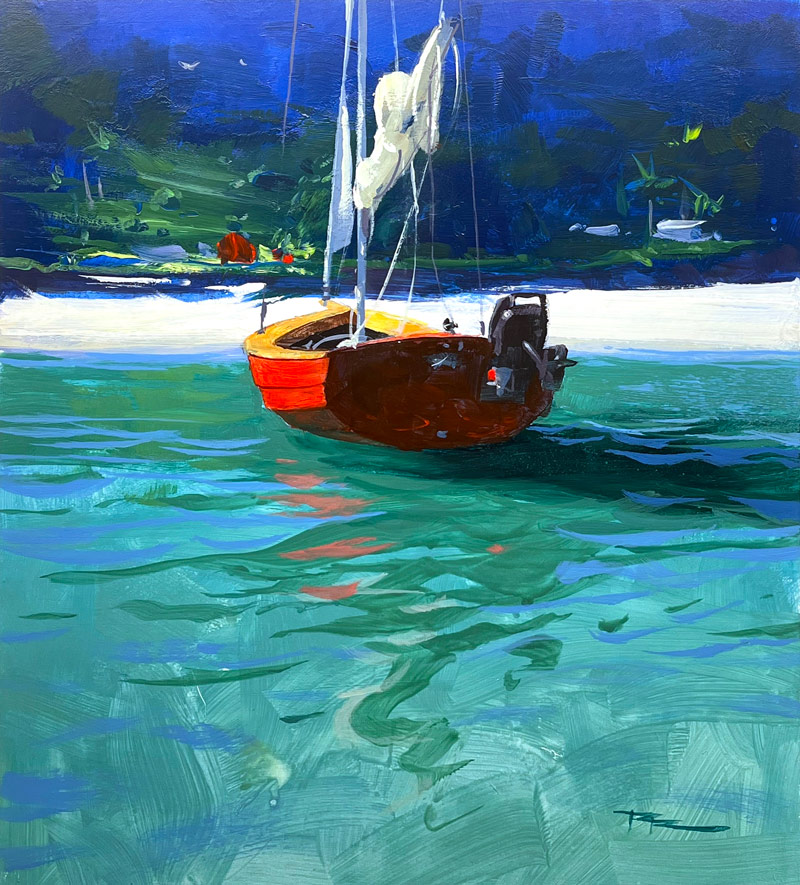
"Gone Ashore" 12x16" Acrylic on Canvas by Richard Robinson
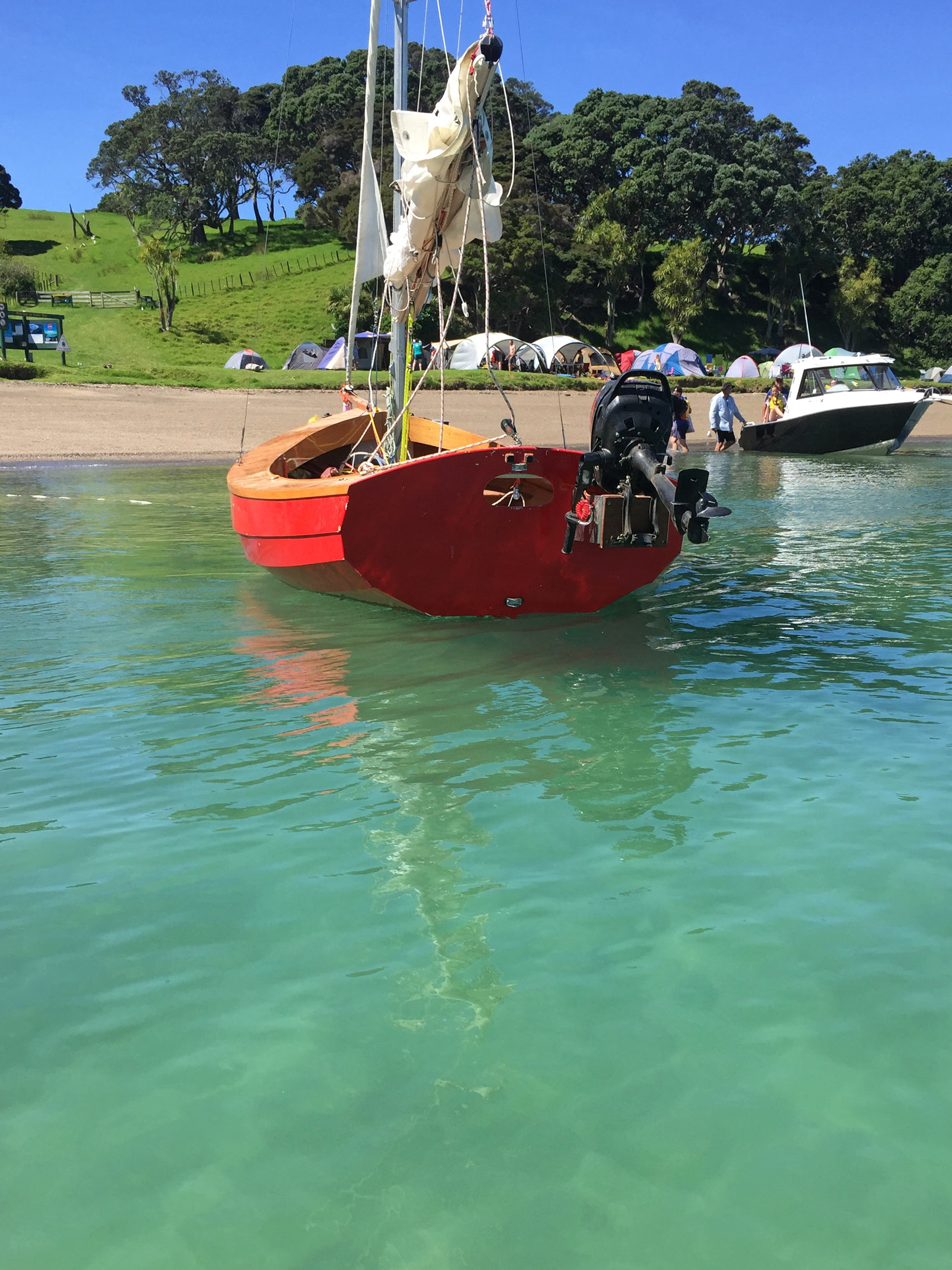
Boat at Urupukapuka Island, New Zealand
The boat sailed across the bay and anchored at our camping beach. It was the reddest red boat I've ever seen; so powerfully vibrant against the turquoise tropical water. I just had to paint it.
Join me in the video lesson to learn how at https://mypaintingclub.com/lessons/252-The-Red-Sailboat
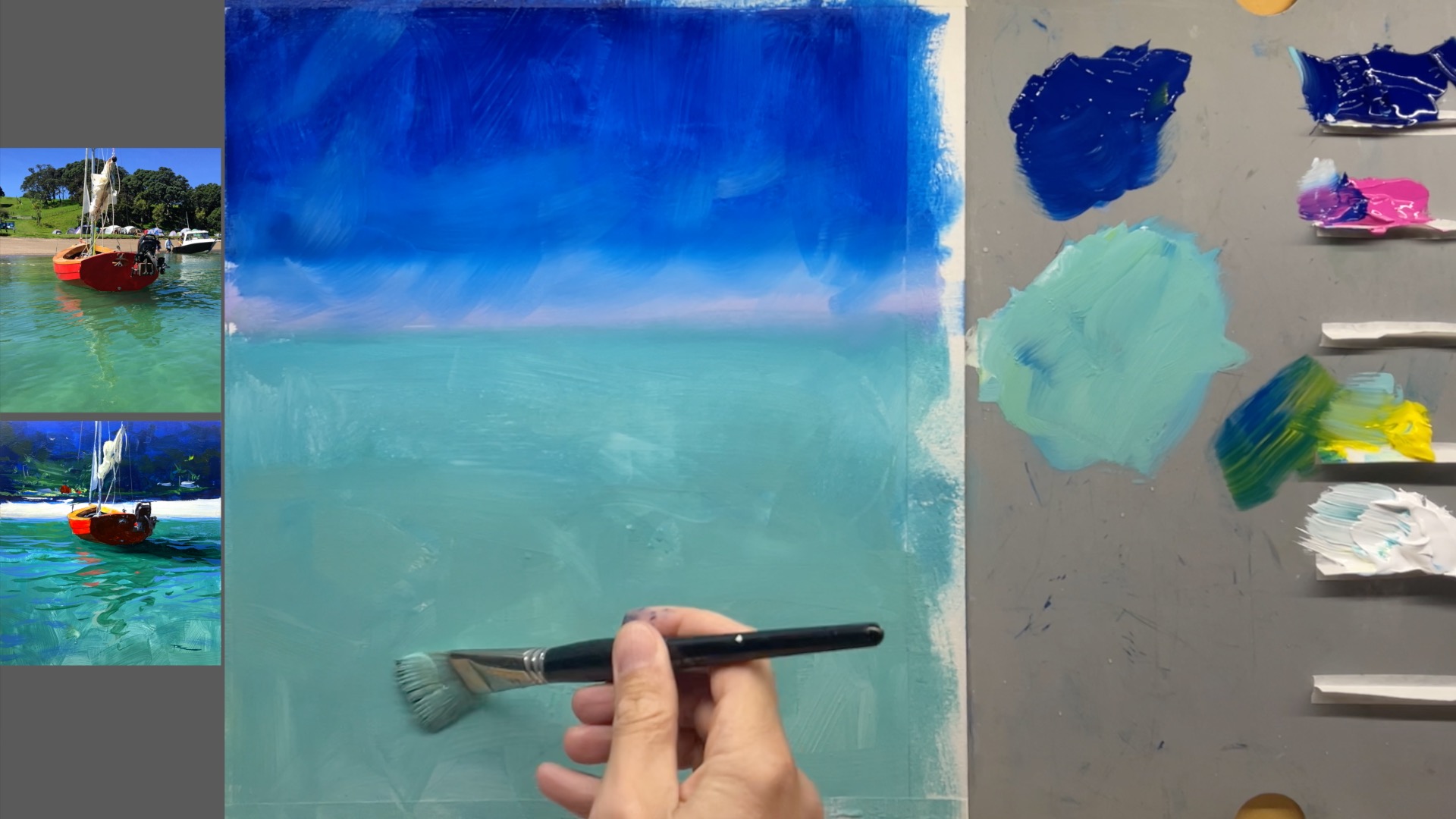
Especially with acrylics it's great to have a base colour to work on so that the white of the canvas doesn't show through in the end. It also takes away the fear of the blank canvas.
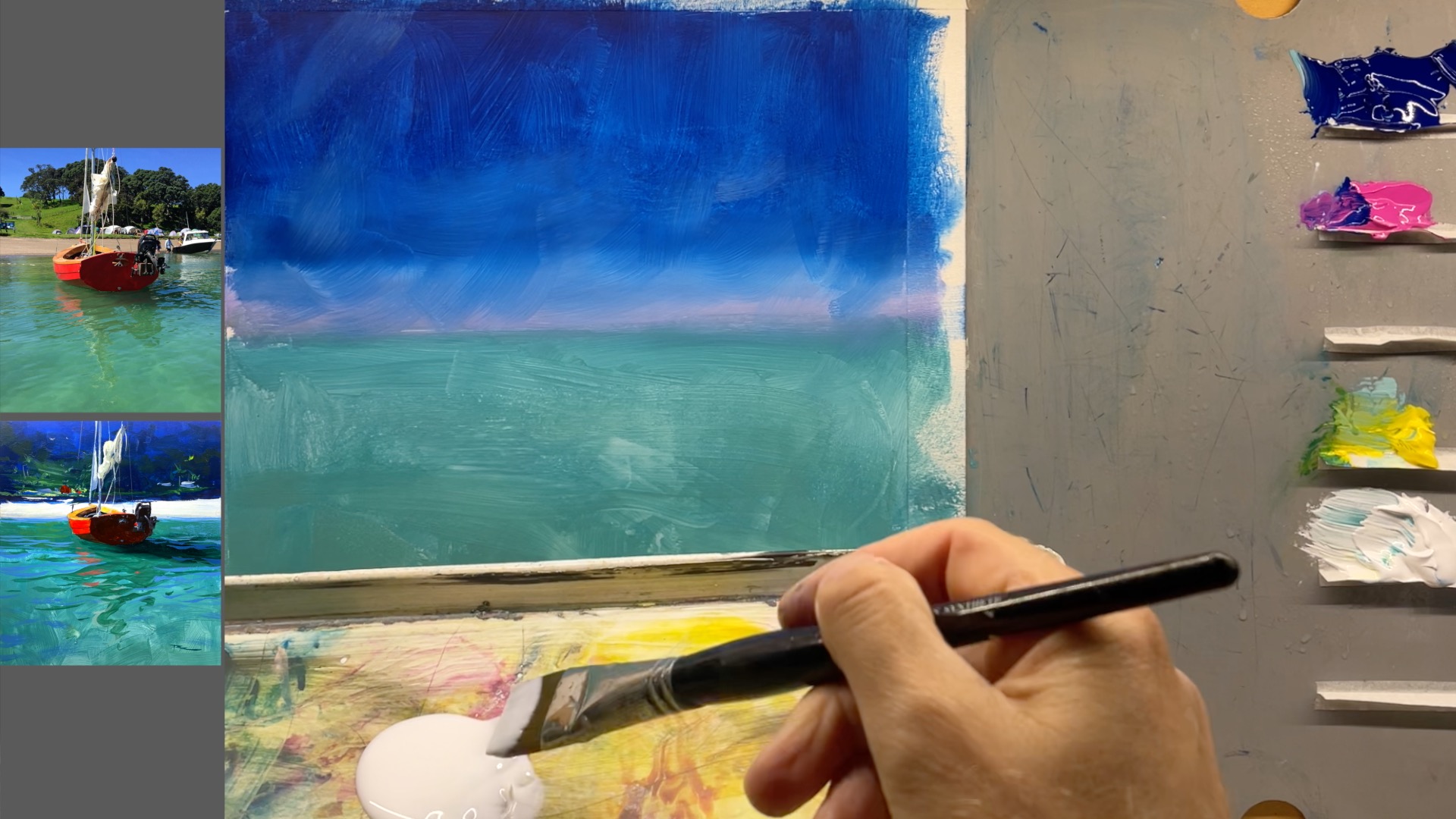
Paint (almost) stress-free with editable layers in acrylic. Simply wait for the layer to dry then seal it with a coat of gloss medium or similar.
When that's dry you can paint over top and not worry about making a mistake, because with a little water you can wipe it right off and try again without disturbing the base layer.
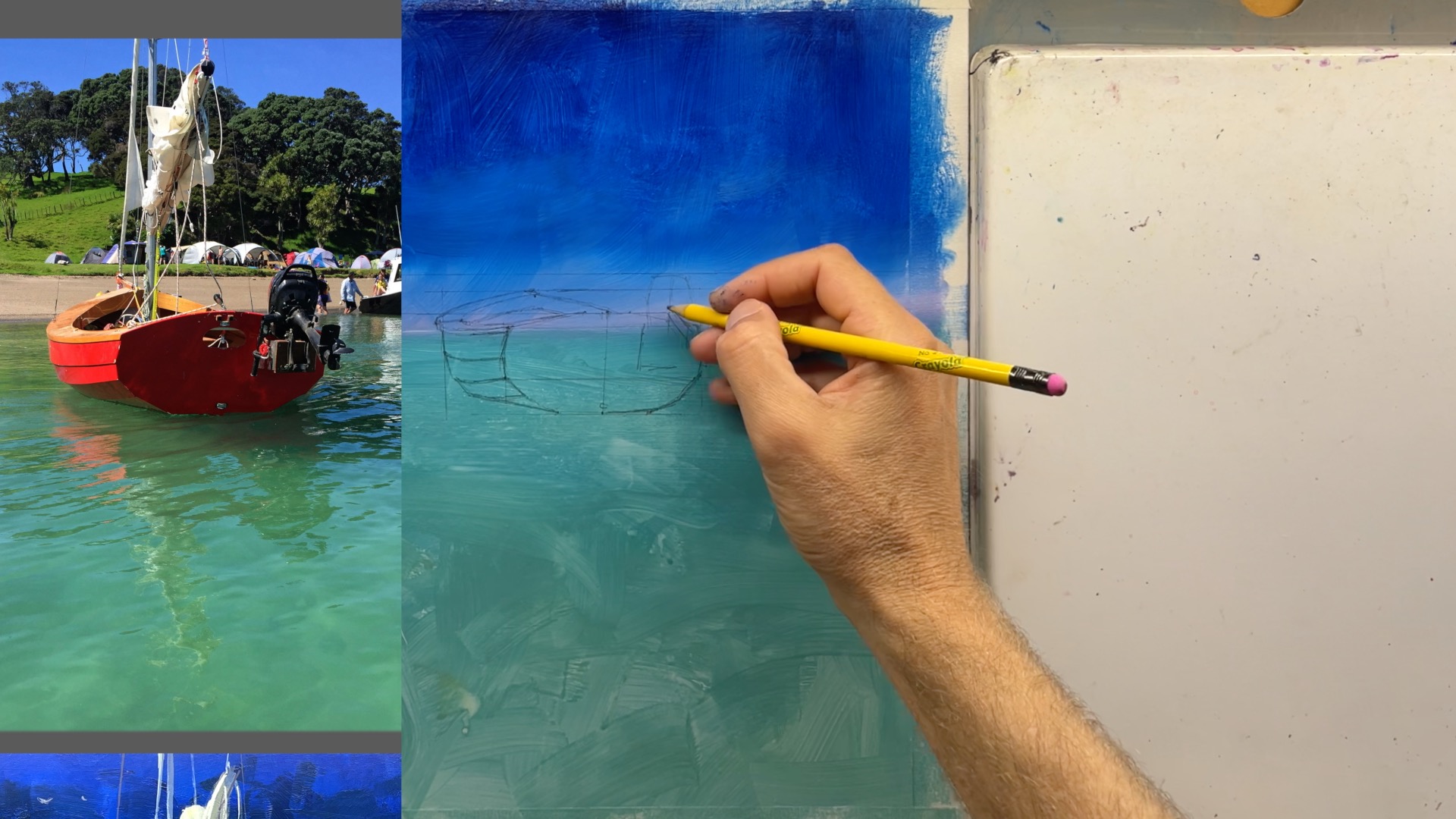
Using a center line is key to getting boats right. Also use the envelope technique where you first lightly draw the rectangle that the boat fits inside.
Focus as much on the 'negative' shapes between the boat and that envelope as you do on the positive shapes inside the boat and you'll be nicely surprised with how well you can draw a boat. Just be patient with this step and keep checking those angles.
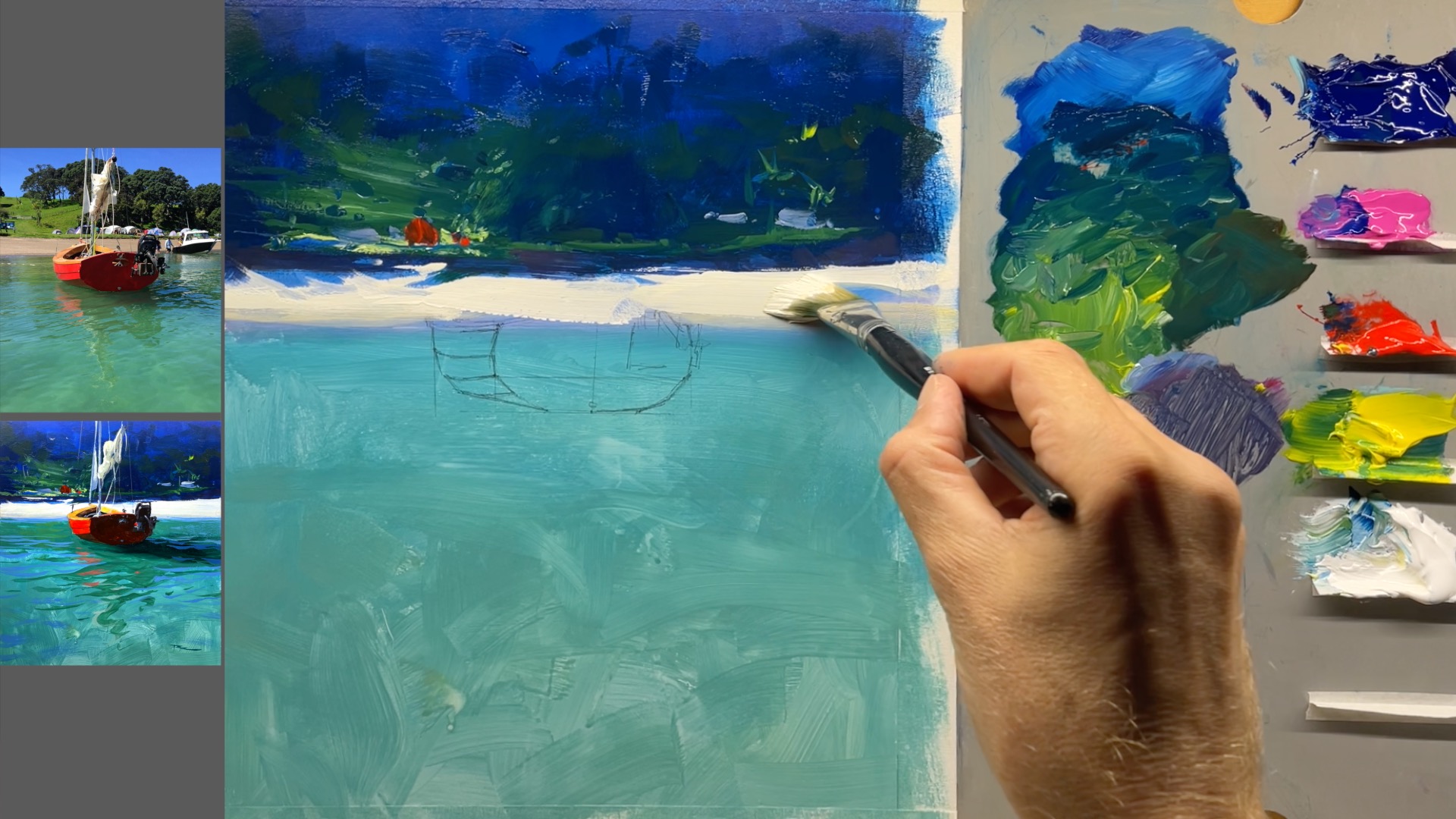
Making this background quite dark is the key to making the beach and the water look really bright by comparision. Keep it simple without too much detail, especially directly behind where the mast and sails will be, so that it doesn't argue with that foreground detail - the centre of attention.
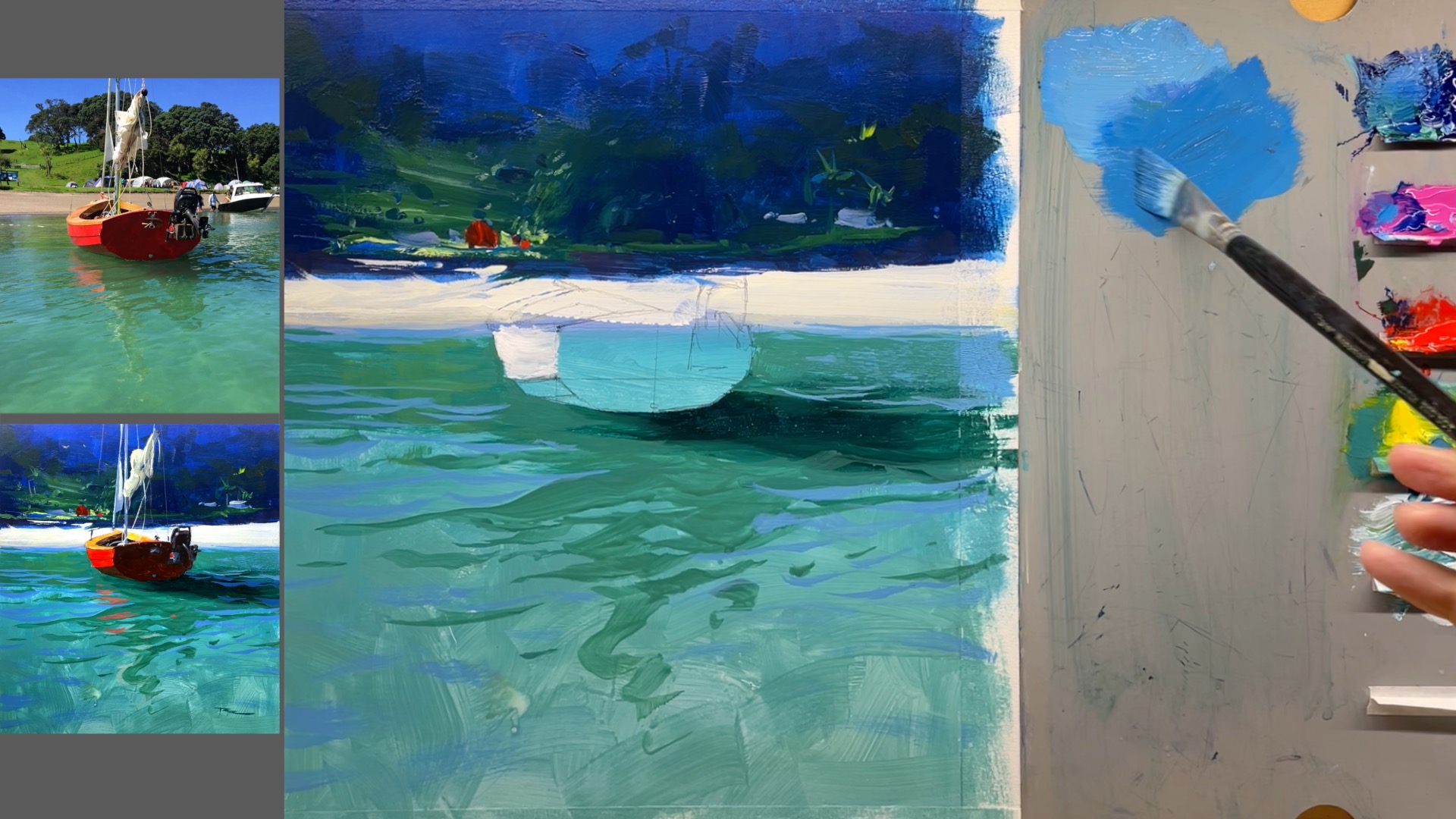
A few things to keep in mind here in this the trickiest part of the painting:
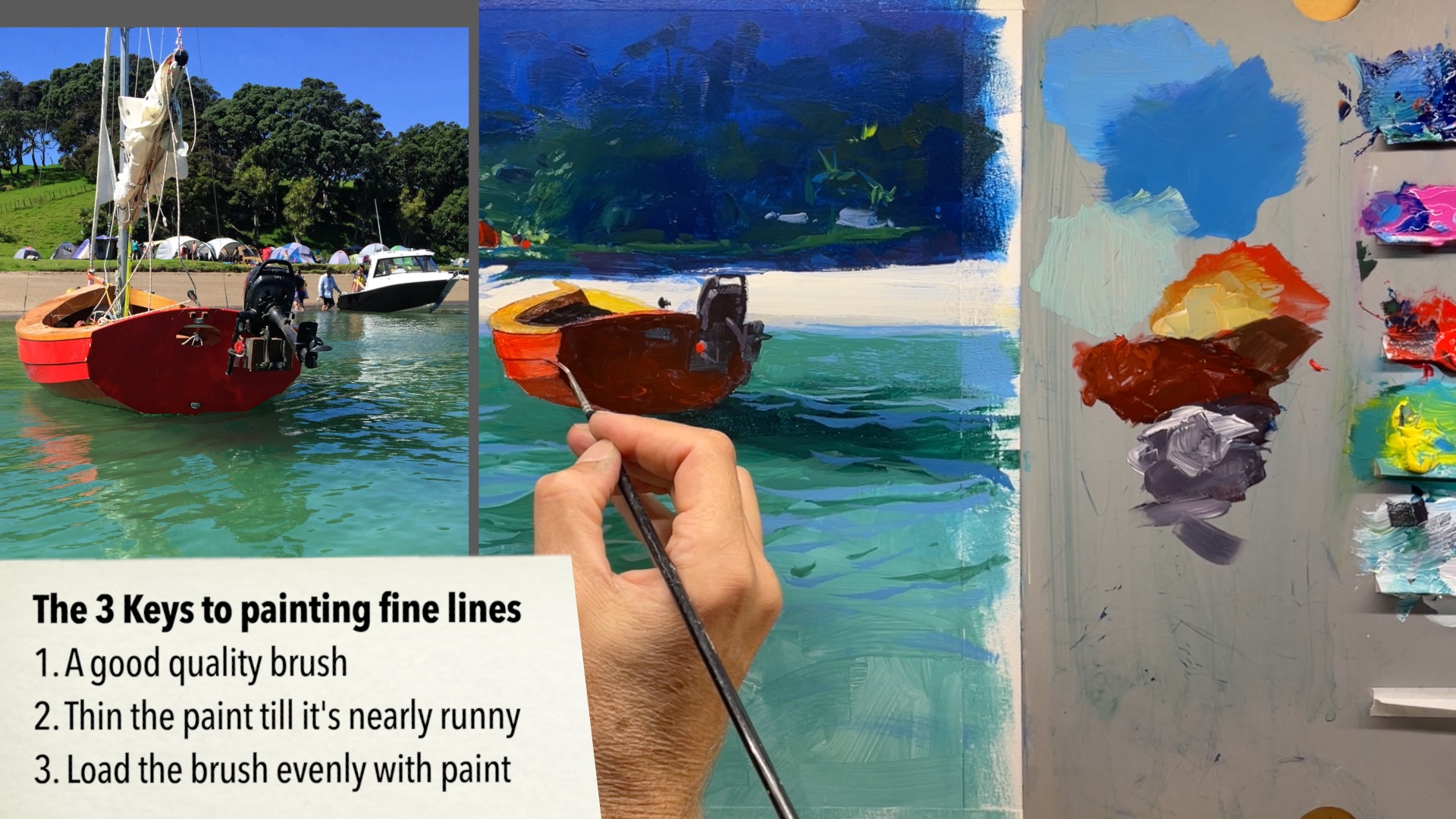
Not an inflatable. Just pure punchy colour and a few crisp details. Use a mahl stick or ruler to steady your hand. Again, practice those thin strokes first on your palette or a scrap of canvas.
If you coat the previous layer with gloss medium first and let that dry you can always wipe off errant brush strokes with a little water.
The red sailboat, acrylics with oil glazing, canvas, 40 cm x 50 cm
Artist: Elena Sokolova
Solid work, Elena. Looks great!

Red sail boat 12x15 oil on panel
Artist: Mark Price
Hey Mark, Great work here. Punchy colours. Nice interest in the background particularly with the trees. Beautiful vibrant colours in the water.
I'd just suggest you trim little off the bottom of the back of the boat, add a little shade to the mainsail and trim its reflection a little because, although it looks great with all the right colours and movement, it's grown too big for what it's reflecting.
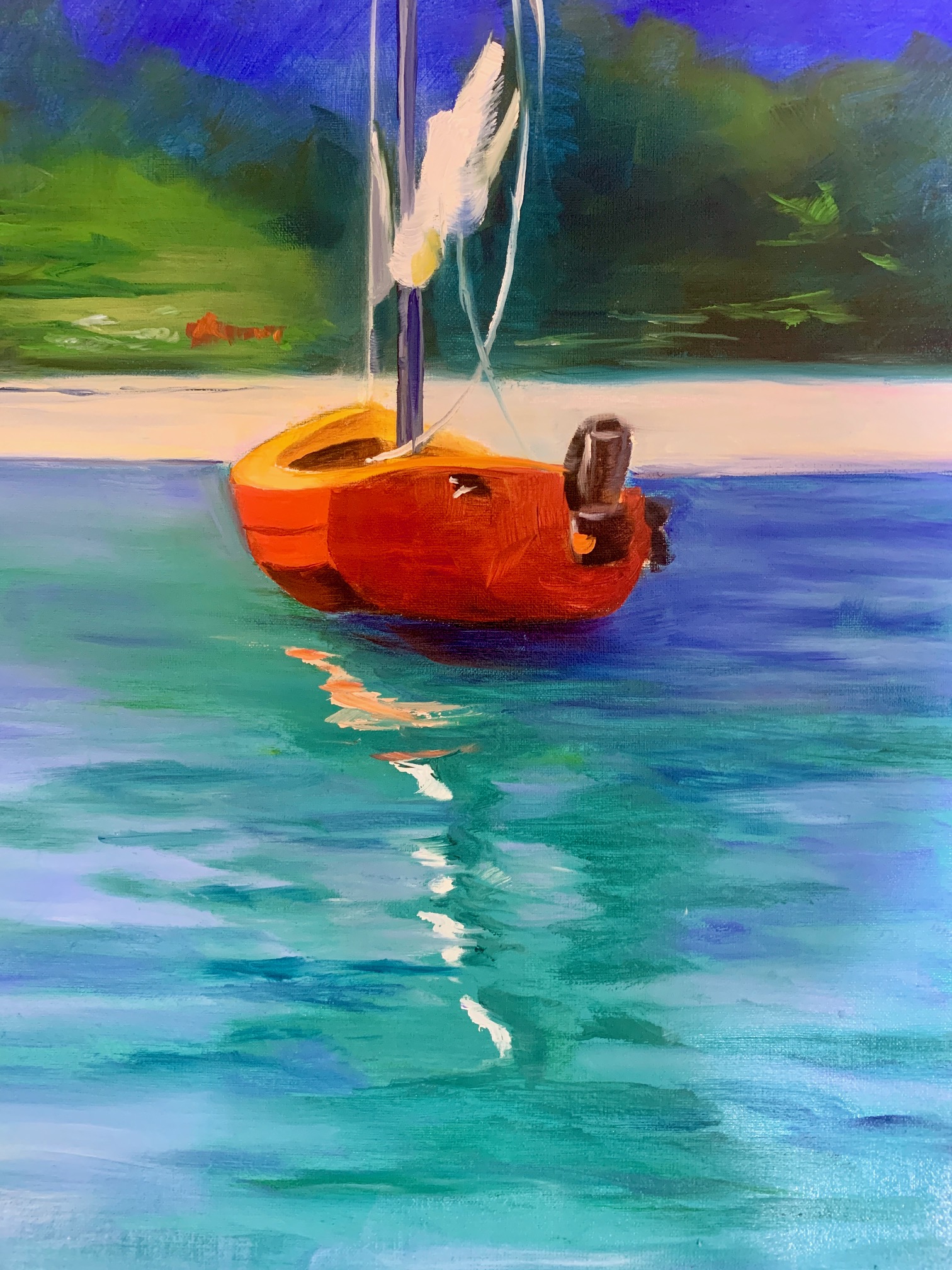
Red Sailboat, 12 x 16 Oil
Artist: Louise Villegas
Hi Louise, good job with the drawing of the boat, the vibrant colours throughout and the painterly wet-in-wet brushwork.
I like that you've lightened the red in the back of the boat but it could stand being a little darker around the motor which should be blocking some light on that surface.
The reflection of the boat and sail could do with another try. Currently they're too light and too regular or pattern-like.
A helpful exercise for you would be to paint on a separate canvas a few of these watery reflections using just black and white paint, (after converting the reference image into black and white). That would take colour out of the equation for you for a while so you could just focus on the shapes and the values.
Every painting is practice for the next one. Enjoy the process!
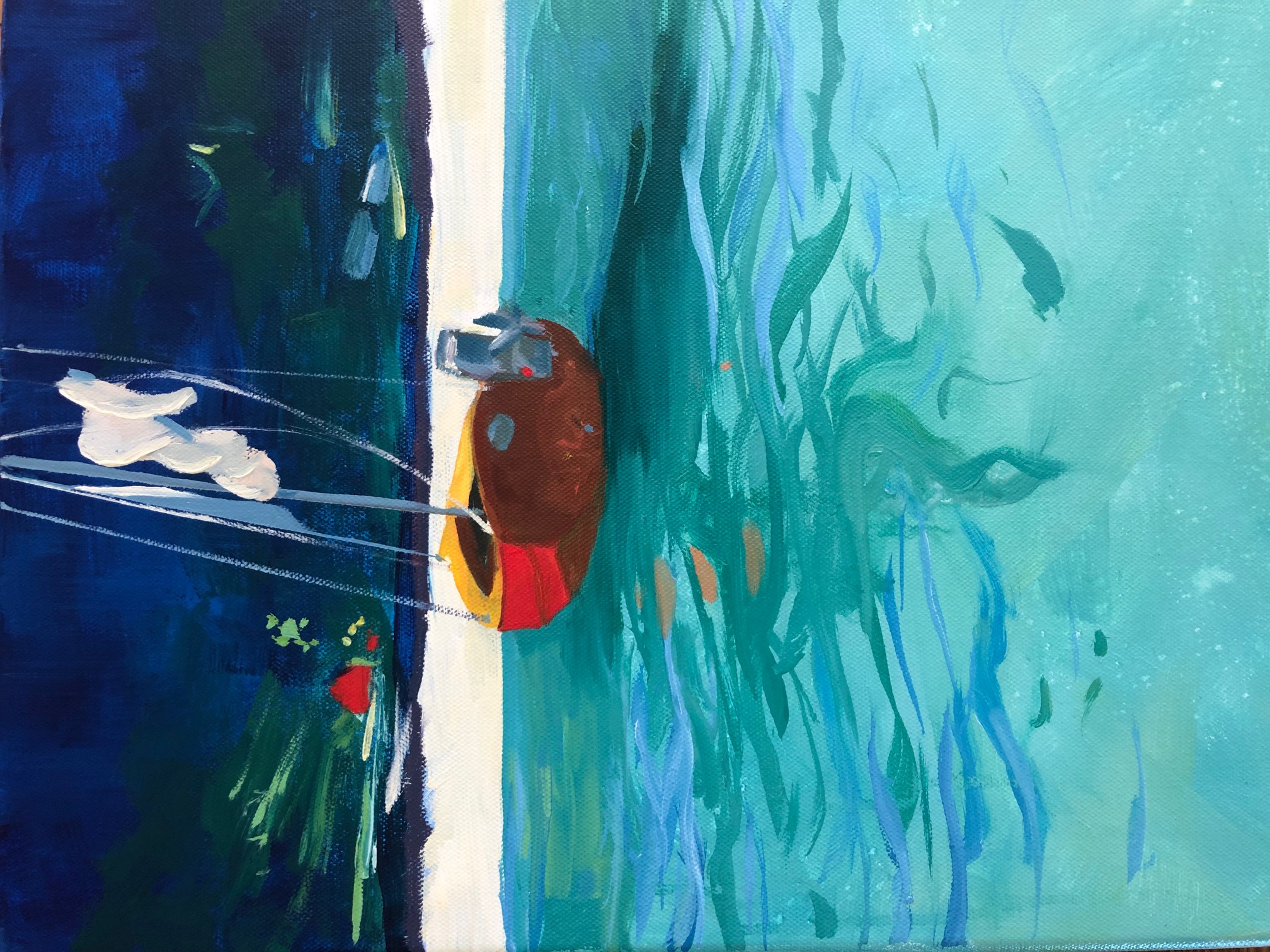
Red Sailboat Acrylics and Oils
Artist: Nancy Newton
Hi Nancy, nice to see you doing this one. Your extra dark background has really made the light on the beach pop out - very tropical! Your colours in the water and boat are good too. Lovely calligraphic brushwork in the reflections - not easy to do and you gave it a sterling effort! You've scumbled it a bit in there though, leaving some of the wavy shapes less resolved that they could be. Still, very nice.
Last little thing, your wires on the boat should be angling up towards the top of the mast.
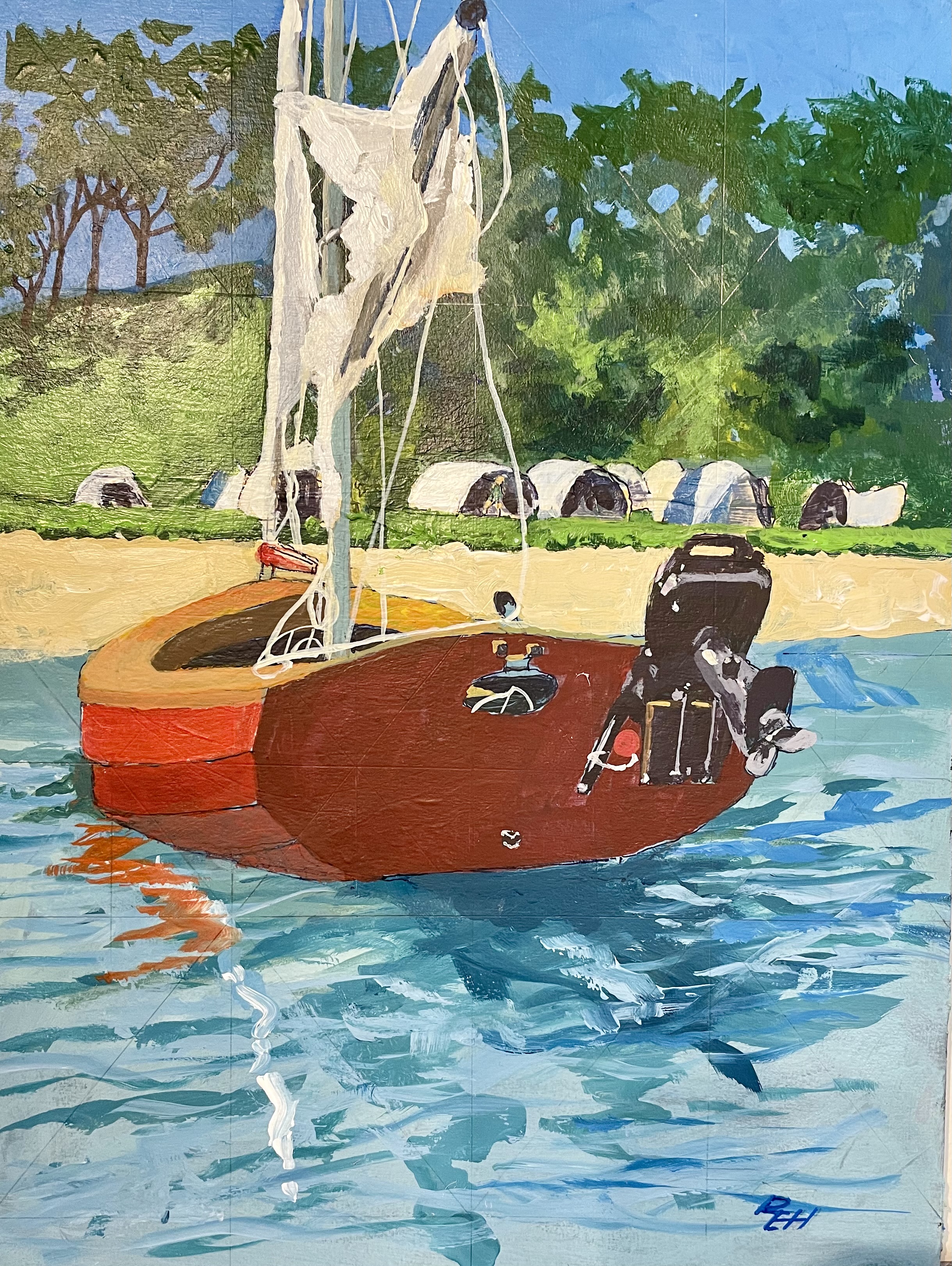
"The Red Boat" in acrylics by Eric Hillmer, Toronto, ON, Canada.
Artist: Eric Hillmer
Hey Eric, lots of beautifully painted engaging detail in this one. Lovely to see the camping situation brought to life and the crisp details in the boat. I'd advise removing the tent behind the mast as it competes with the foreground.
It looks to me like you lost your way in the water there whereas the rest of the painting is very well finished. To get a grip on this complex subject I'd recommend you do the same as Louise and paint a few studies of this section in just black and white. Works wonders.
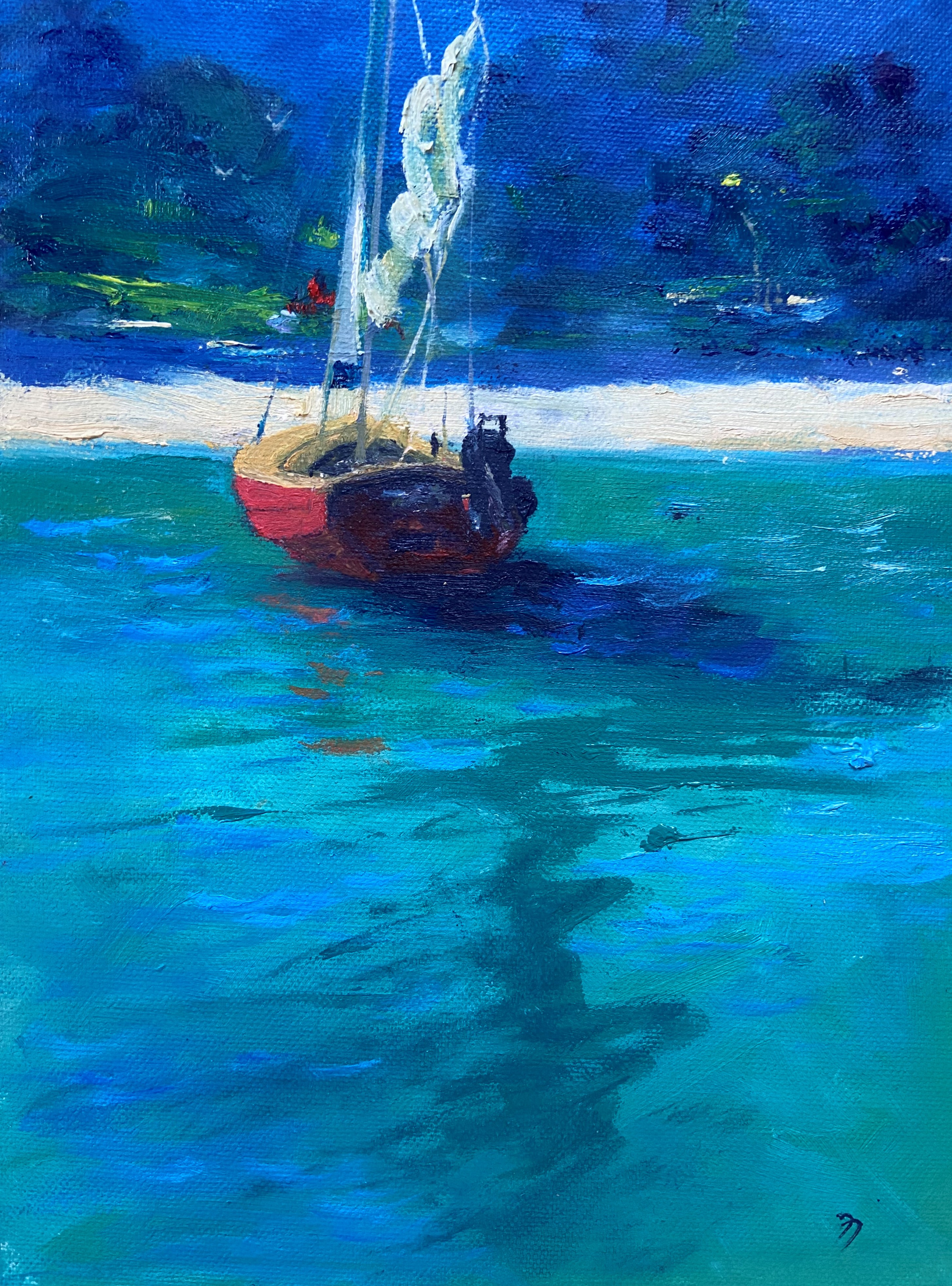
The Red Boat - 9" x 12" Oils on Canvas Board by Fay Thomson
Artist: Fay Thomson
Hi Fay, I love your approach with this one. The colour is scintillating and your brushwork is beautiful and painterly. I like that you changed the composition and tried to balance the boat on the left with that long elegant dark reflection.
However, what is that a reflection of? That's the question it leaves me asking. You might have been better off using a squiggly line of sea foam instead.
Other than that hiccup, gorgeous!
This demo is in acrylics but it's fine for oils too.
I'll take you step by step through this whole rich process and you can choose which parts you'd like to try out in your own work.
“We keep moving forward, opening new doors, and doing new things, because we’re curious and curiosity keeps leading us down new paths.”
—Walt Disney
Login to your account to post a comment.